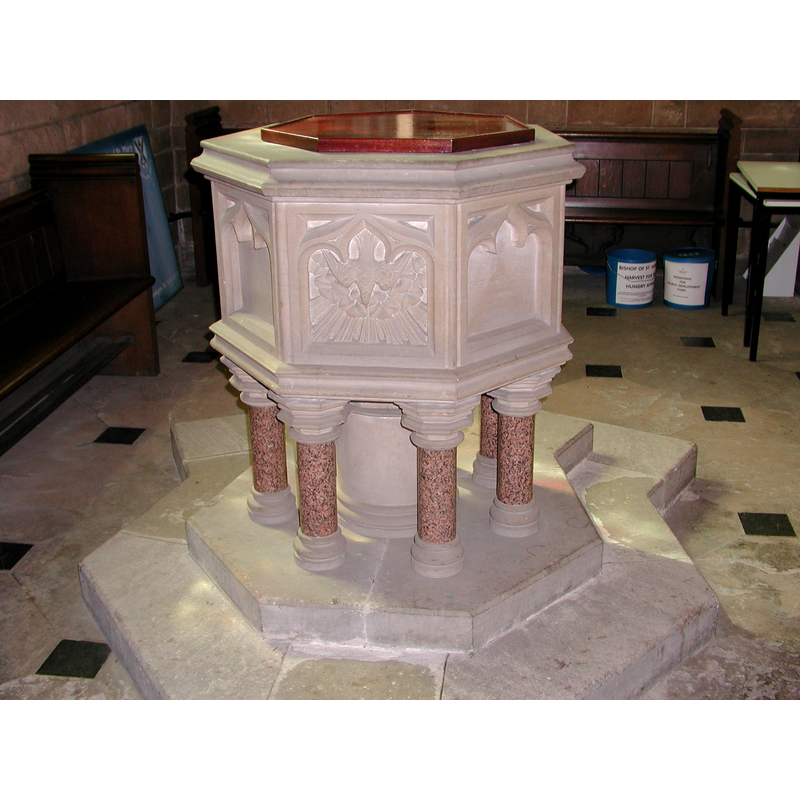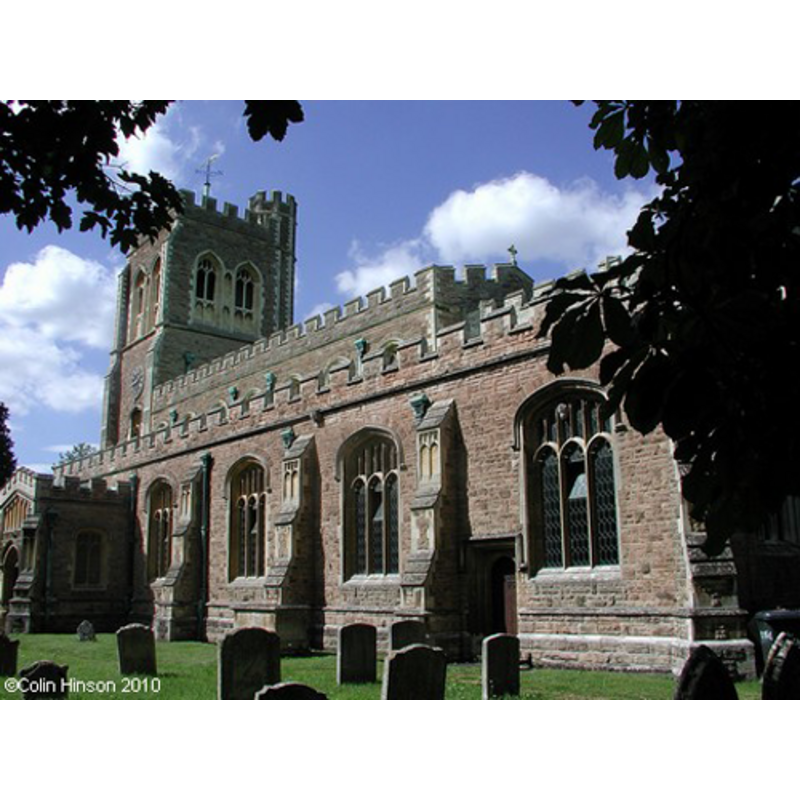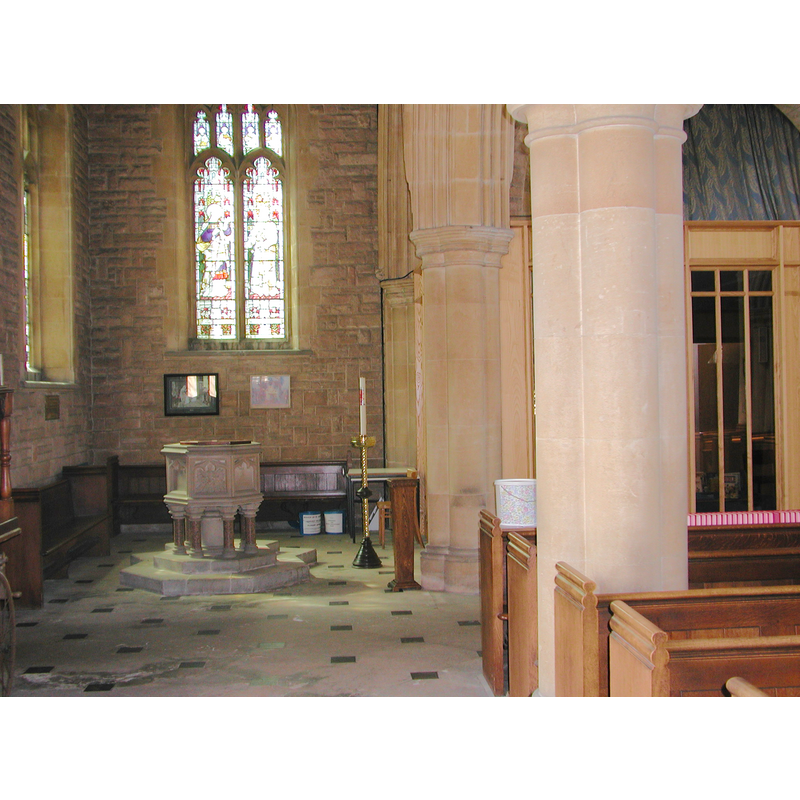Cardington nr. Bedford / Cardyngton / Chenetone / Chernetone / Kerdinton / Kerdyngton

Image copyright © Colin Hinson, 2008
Image and permission received (e-mail of 19 September 2005)
Results: 10 records
animal - bird - dove - in a trefoil (symbol of the Holy Ghost)
design element - architectural - column - 8
Scene Description: detached colonnettes around the central shaft -- the Victorian font
Copyright Statement: Image copyright © Colin Hinson, 2008
Image Source: digital photograph taken 19 September 2005 by Colin Hinson [www.yorkshireCDbooks.com]
Copyright Instructions: Image and permission received (e-mail of 19 September 2005)
design element - architectural - window - trefoiled - 8
design element - motifs - moulding
design element - motifs - moulding
design element - motifs - moulding
Scene Description: on the capitals and bases of the shaft and colonnettes of the base -- the Victorian font
Copyright Statement: Image copyright © Colin Hinson, 2008
Image Source: digital photograph taken 19 September 2005 by Colin Hinson [www.yorkshireCDbooks.com]
Copyright Instructions: Image and permission received (e-mail of 19 September 2005)
view of basin - interior
view of church exterior - south view
view of font and cover
view of font and cover in context
INFORMATION
FontID: 10626CAR
Object Type: Baptismal Font1?
Church/Chapel: Parish Church of St. Mary the Virgin
Church Patron Saints: St. Mary the Virgin
Church Location: Church Lane, Cardington, Bedfordshire, MK443SS
Country Name: England
Location: Bedfordshire, East
Directions to Site: Located 5 km ESE of Bedford
Ecclesiastic Region: Diocese of St. Albans
Historical Region: Hundred of Wichestanestou [in Domesday] -- Hundred of Wixamtree
Century and Period: 12th century (mid?), Late Norman
Credit and Acknowledgements: We are grateful to Colin Hinson, of www.yorkshireCDbooks.com, for his photographs of this church and modern font.
Font Notes:
Click to view
There are two entries for this Cardington [variant spelling] in the Domesday survey [http://opendomesday.org/place/TL0847/cardington/] [accessed 23 June 2015], neither of which mentions cleric or church in it. The Victoria County History (Bedford, vol. 3, 1912) notes: "Cardington Church was included in the foundation charter of Simon de Beauchamp to Newnham Priory about 1166 [...] and was named in the confirmation charters of William de Beauchamp, of Henry II, and of Thomas Mowbray Duke of Norfolk. [...] The church of St. Mary the Virgin was entirely rebuilt in 1898–1902 with the exception of the chancel. [...] A few relics of the old church, which was most unnecessarily destroyed, are built into the modern walls. The tower arch is made up with the voussoirs of a 12th-century arch, retooled and with a false order cut on them. [...] The font is modern, but there is in the church a curious font, apparently of black glazed pottery, dating from c. 1800, and ornamented with classical figures and ornament of very delicate and well-modelled character." Pevsner (1968) writes: "Font. Given by Harriet Whitbread, in 1783, who also gave the font to Essendon in Hertfordshire. They are the only one in England of Wedgwood black basalt. Like the Essendon one, that at Cardington stands on a tapering square fluted pillar." [Pevsner adds a footnote: "Mr. Humphrey Whitbread tells me that a third such font was made for Melchbourne".] NB: the only font we have documented in the Church of St. Mary, Cardington, is a Victorian one that appears to be made mainly of limestone or very fine-grained sandstone: it consists of an octagonal basin with deeply-cut panels between upper and lower rim mouldings, the panels themselves decorated with trefoil windows, one of which contains the dove symbol of the Holy Ghost, while the others appear blank; the inner well of the basin is round and unlined, with a central drain hole; the base is made of a central shaft with eight detached outer colonnettes, all of the same stone as the basin except for the stems of the outer colonnettes, that are made of reddish marble; the colonnettes and the central shaft have moulded capitals and bases; the font is raised on a two-step plinth with kneeling stone.; flat wooden cover, plain and modern. [NB: the fabric of the original church goes back to the 12th century, but we have no information on its original font].
COORDINATES
Church Latitude & Longitude Decimal: 52.119206, -0.414979
Church Latitude & Longitude DMS: 52° 7′ 9.14″ N, 0° 24′ 53.92″ W
UTM: 30U 676977 5777449
REFERENCES
Victoria County History [online], University of London, 1993-. Accessed: 2011-10-18 00:00:00. URL: https://www.british-history.ac.uk.

